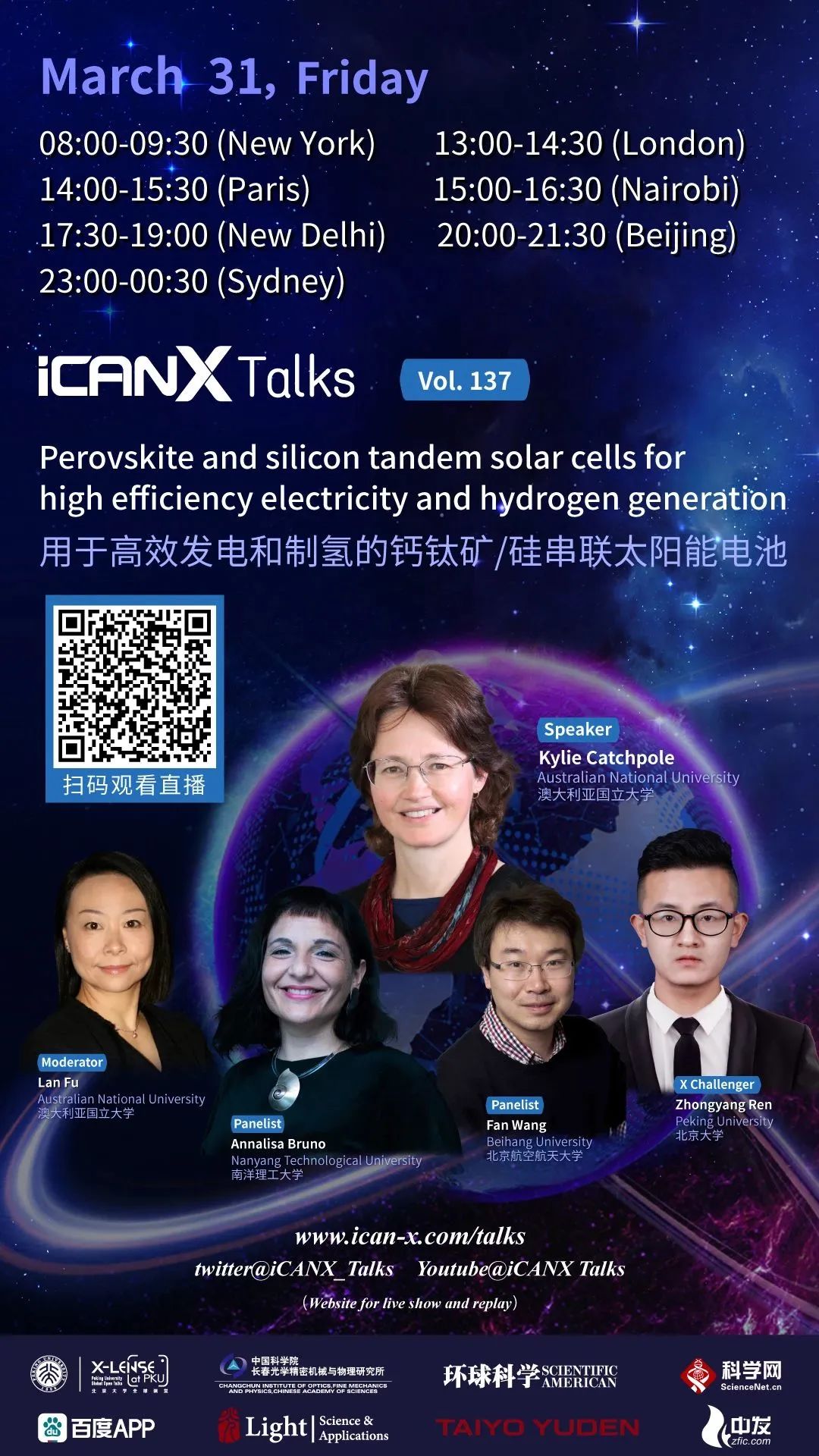Speaker: Kylie Catchpole, Australian National University
Time: 20:00-21:30 pm, March 31, 2023, GMT+8
Venue: Long press to identify the QR code and jump to the webpage!
Abstract:
Combining perovskites with well-established photovoltaic materials such as silicon is an attractive approach for producing cheap, high efficiency and high voltage solar cells. In our work we have used a range of approaches to increase the efficiency of perovskite solar cells for tandems, including 2D perovskites, nanostructured surfaces and novel materials, and have demonstrated over 30% efficiency for 4-terminal perovskite/silicon tandem solar cells. The high efficiency achievable with perovskite/silicon tandems also enable high efficiency for direct solar-to-hydrogen generation, and we demonstrate a system that uses such tandems to achieve a solar-to-hydrogen efficiency of 20%. We also discuss how high efficiency can contribute to lowering the cost of photovoltaics and to decarbonization, as well as some emerging research challenges as solar transitions to become one of the world’s major energy technologies.
Biography:
Her group has achieved world leading efficiencies for perovskite and perovskite/silicon tandem solar cells, and their work on direct solar-to-hydrogen generation was listed as one of the top 10 innovations globally by the Innovation for a Cool Earth Forum (ICEF) in 2020.
She was awarded the inaugural John Booker Medal for Engineering Science from the Australian Academy of Science for her work on increasing light absorption in solar cells using nanophotonics. In 2022 she was elected as a Fellow of the Australian Academy of Technological Sciences and Engineering and as a Fellow of the Royal Society of Chemistry.
Source: iCANX

